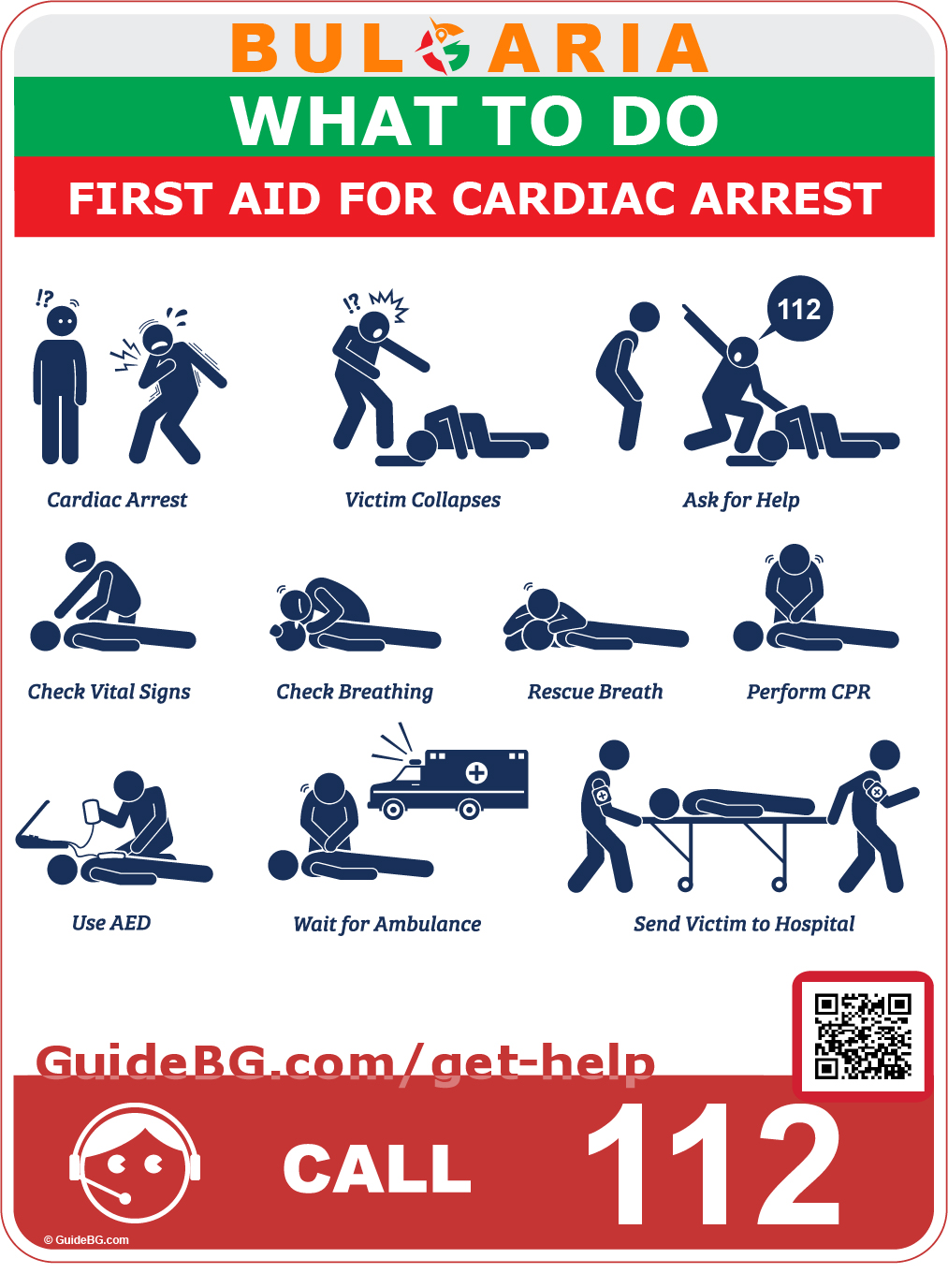Here is a step-by-step guide on how to administer first aid in the case of cardiac arrest:
Victim is Collapsing
If you witness someone suddenly collapse, it’s crucial to act quickly. Cardiac arrest can lead to death within minutes if prompt action isn’t taken.
Ask for Help or Call 112
Immediately call emergency services or ask someone else to do so. Provide your location and describe the situation clearly.
Check Responsiveness
Gently tap the victim and loudly ask, “Are you OK?” If there is no response, proceed with the following steps immediately.
Check Breathing, if No Breathing – Give a Rescue Breath
Quickly check for signs of breathing by looking at the chest or listening for breath sounds. If the person isn’t breathing, give a rescue breath by pinching the victim’s nose shut, taking a deep breath, and completely covering the victim’s mouth with yours, making an airtight seal. Blow into the victim’s mouth to make the chest rise, then let it fall. Perform this twice.
Start Performing CPR
Place the heel of one hand on the center of the victim’s chest and the other hand on top of the first. Press down hard and fast, compressing the chest at least 2 inches deep at 100 to 120 compressions per minute. After 30 compressions, provide 2 rescue breaths. Continue the cycle.
Use AED
If an Automated External Defibrillator (AED) is available, turn it on and follow the voice-guided instructions. Typically, this involves placing pads on the victim’s bare chest and allowing the machine to analyze the heart rhythm. If advised by the AED, deliver a shock.
Continue CPR Until Help Arrives
Continue performing CPR cycles of 30 compressions and 2 rescue breaths, using the AED as instructed until professional medical help arrives. If another trained individual is present, you may alternate performing CPR to avoid fatigue.
Send Victim to Hospital
Once emergency medical services arrive, they will take over care and transport the victim to the hospital for further evaluation and treatment. Provide any relevant information you may have, such as how long the victim was in cardiac arrest, to the healthcare professionals.
While this guide provides a general outline, it’s important to undergo formal training in CPR and using an AED for the most effective intervention.
The information provided in the health-related guides is for general informational purposes only. It is not intended as, nor should it be considered, a substitute for professional medical advice, diagnosis, or treatment. Always seek the advice of your physician or other qualified health provider with any questions you may have regarding a medical condition. Never disregard professional medical advice or delay seeking it because of something you have read in these guides. If you think you may have a medical emergency, call your doctor or emergency services immediately.



